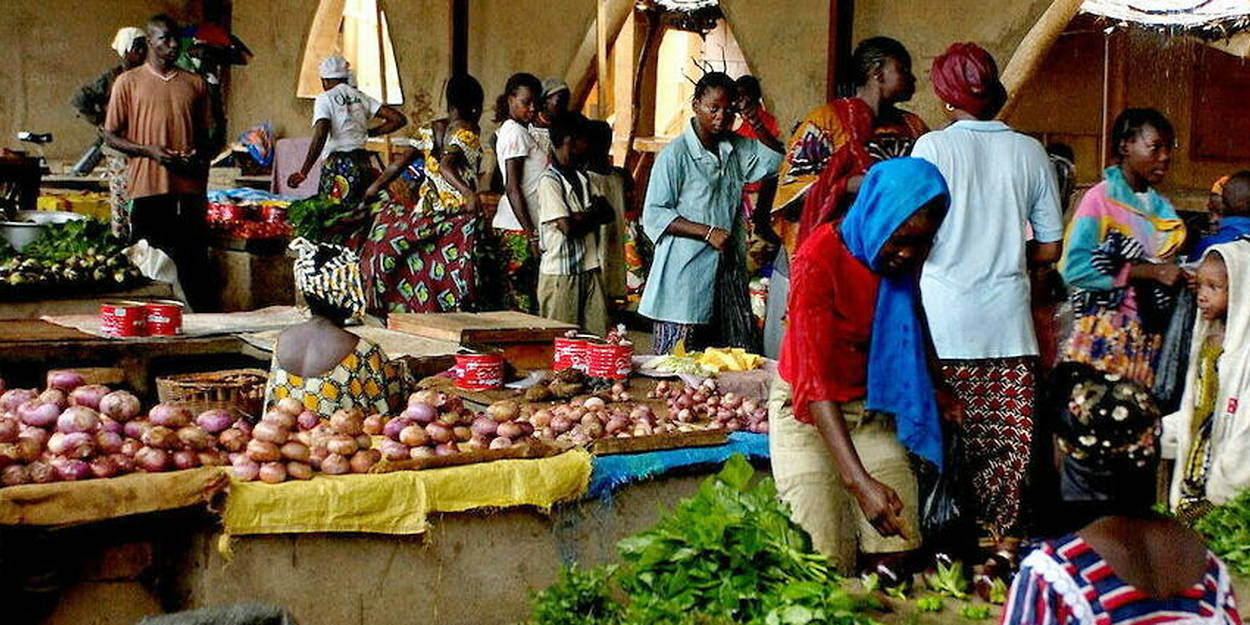Climatically devastated in the 1980s, the area has recorded abundant rains and record harvests for several years.
By Erwan Seznec
© PHILIPPE ROY / Philippe ROY / Aurimages via AFP
Published on
In May 10, 2023, the Malian Ministry of Agriculture posted a very positive press release on the cereal harvest in 2023-2024. This season again, it should beat that of the previous year (by exactly 6%), “under the effect of an expansion of the areas planted, favorable weather conditions and improved distribution of fertilizers to producers”. Mali now exports 10 to 15% of its cereals to neighboring countries. In December 2022, the government even decided to block them in the hope of slowing down the rise in prices internally!
Food shortages persist in the Sahel, but now much less because of the climate than because of insecurity, which hinders the work of farmers. This is the case in Niger. In this country, ranked among the poorest in Africa, harvests are breaking records: + 69% for cereals in 2022 compared to the previous year, with an increase of one third in the total area of crops sown. Food insecurity is caused by the Islamists and the lack of fertilizer, much more than by drought.
READ ALSOSahel: how civilian populations suffer from the jihadist insurgency
The climate anomaly of the 1970s and 1980s
For specialists, this information is not surprising. The general public has kept a vintage image of the Sahel, fixed in the 1980s: an immense sub-Saharan zone inexorably nibbled away by sand and dunes, for lack of precipitation. “West Africa actually experienced a brutal drought from 1968 to 1993,” explains Luc Descroix, hydrologist at the Institute of Research for Development. ” It’s from the past. We now have robust data that allow us to say that rainfall has returned to its long-term average level. »
Additional good news, the return of rain in Burkina Faso, Mali, Mauritania, Niger and Chad will continue, under the effect of climate change. “The land is warming up faster than the water in the Gulf of Guinea,” explains Luc Descroix. It makes the monsoon more powerful. »
READ ALSOFood crisis: where is Africa really? The phenomenon is comparable to what meteorologists call a “Cévenol episode”, or sailors a “thermal”, but on the scale of a continent. Schematically, the overheated air of the Sahel rises, which pumps towards the interior of Africa masses of oceanic air, which are relatively cooler and above all loaded with humidity. “We are on the way to effective monsoons at least until 2100”, sums up Luc Descroix. So much so that the Sahel now sometimes experiences floods!
Analysis of series of satellite photos confirms “a trend towards re-greening on a regional scale as a result of the improvement in rainfall conditions from the 1990s”, explain French and African researchers in a study published in 2021 in the journal Physio-Geo. The period 1968-1994 was “a dry anomaly”, with causes still poorly understood.
When overpopulation reverses famine
Luc Descroix covers a lot of ground. He was in Guinea when Point questioned him. He explores on the spot another phenomenon, even more counter-intuitive than re-greening linked to global warming. The decline of the famine would sometimes be the consequence, and not only the cause, of the increase in the population in the Sahel. “We are seeing an accelerated re-greening in the most populated regions,” notes the hydrologist.
He has a hypothesis, based on his observations, to confirm: “Farmers, who are more numerous, have the means to switch from extensive agriculture to intensive intensive agriculture. Nothing new. One could compare certain sectors of the Sahel to the terraced cultivation areas of Tuscany. The land is unrewarding, but with hard work it can feed many people. »
READ ALSOSahel: what if the solution also involves food systems? In two decades, in many rural areas of the Sahel, the population has doubled and yields have tripled, starting a virtuous circle. “There is labor to work, rain to grow nitrogen-fixing acacias and money to buy inputs. As a result, food security improves. The land is very mediocre, but, with intensive work, it feeds 400 inhabitants per square kilometer”, i.e. a density four times greater than that of France, closer to that of the Netherlands.
Wouldn’t overpopulation therefore necessarily exhaust a spontaneously nourishing land? “The idea is gaining ground, but it does not yet have consensus,” smiles Luc Descroix. Let’s say that I look like an Afro-optimist…”
